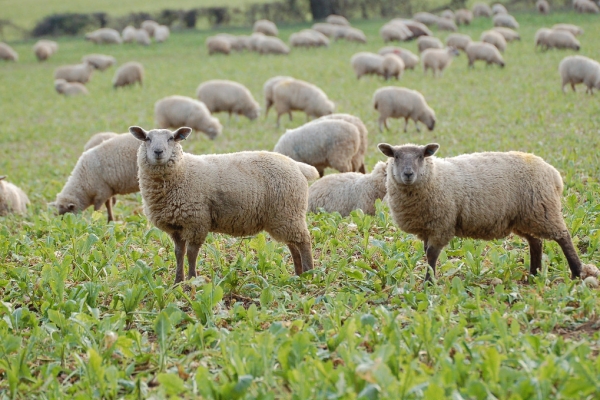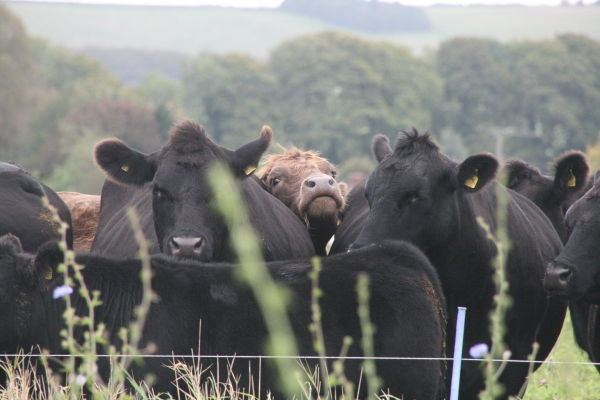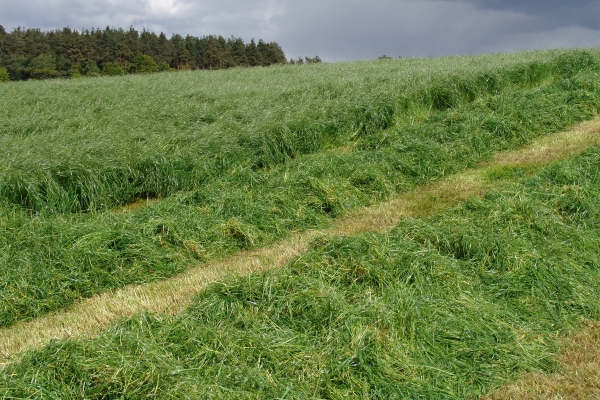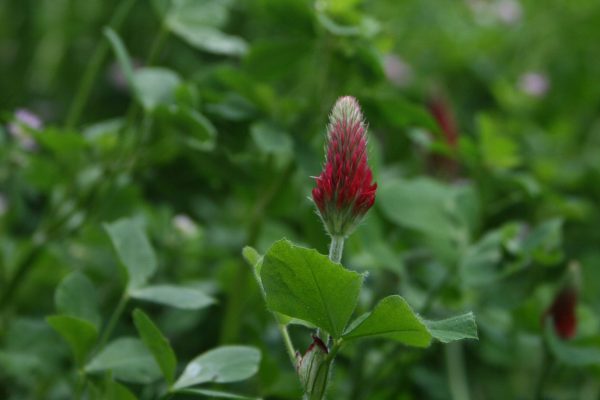Wheatsheaf Farming is a joint venture contracting company owned by the farmers involved to give economies of scale. I manage the business – the total hectarage is around 700 hectares across 3 farms and the base for the operations is Folly Farm. Wheatsheaf is non-profit and charges the client farmers a hectarage fee to cover all fixed costs which is paid monthly.
The three farms essentially operating as one larger farm gives the business more purchasing power which can help to produce more for less (on average per unit) – examples of this could include being able to buy machinery / labour that can do the job quicker or buying consumables in larger amounts which will work out cheaper. Economies of scale also come into play when marketing grain; producing more grain helps to store, transport and sell grain more efficiently.
I grew up in Essex and worked on a farm with my father whilst completing a course at Writtle College. I then moved up to a foreman’s job on a neighbouring farm. In 1998, I moved to Hampshire to take a manager’s post which then evolved into the joint venture of Wheatsheaf Farming in 2002. In 2004 I was awarded a Nuffield Farming Scholarship and travelled to Australia, New Zealand, Sweden and Hungary studying labour recruitment, training and retention. During this time, I met a lot of forward thinking and open-minded people employing alternative approaches to farming.
In 2010, after 35 years of crop production dominated by chemicals, I was seeing my costs of production rise whilst yields were levelling off. This, partnered with previous experiences gained doing the Nuffield Scholarship, prompted a shift in focus towards maintaining and improving soil health and biology, seeking solutions outside of bags and cans.
4 principles of regenerative agriculture are followed across the farms:
- Don’t disturb the soil – achieved via direct drilling all crops.
- Keep living roots in the soil.
- Keep the soil surface covered – achieved by growing cover crops before all spring crops and growing companion crops with oilseed rape (OSR). This coming year (2024), I will also be trying companion cropping with wheat and beans.
- Grow a diverse range of crops – achieved with a diverse rotation.
Through these practices, I have seen reductions in fuel, labour, impact of depreciation, nitrogen (N) and other inputs, and the aim is to reduce them even further.
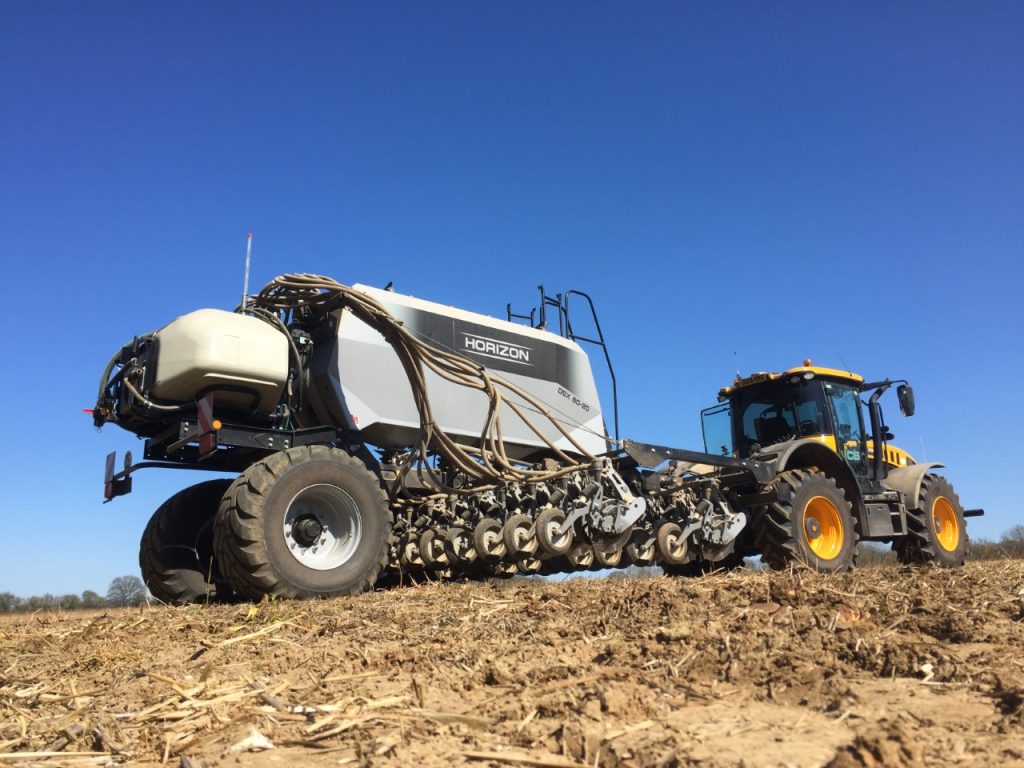
Crops currently grown across the farms are OSR, winter wheat (including spelt), winter beans, spring wheat, spring barley and spring beans. Some grain goes into a local co-op, but most of it is marketed by the company through spot sales and some pools (rather than outsourcing the selling of grain to a marketer). The Wheatsheaf Farming company has its own marketing policy meaning we decide when, how much, and where to sell grain. The anomaly is the spelt wheat which goes straight to a local mill, and we have a relatively small amount of that flour back which is sold under our own brand.
We are coming to the end of a countryside stewardship scheme so I am currently deciding where to go regarding CSS and SFI. I am confident we will enter into the SFI as many actions can be comfortably met.
We have hosted farm walks for a range of groups including local bakers and deli owners, wildlife groups, CSF, DEFRA staff, NE advisors and NFU groups. Folly farm has also been visited by pre-school, primary and secondary school children for the last 22 years. For the last two years it has hosted an event called ‘Farm my Food’, ran by LEAF education and Hampshire Fare. The aim is to give visitors a better insight into food production, sustainability and the environment as well as animal welfare, health and nutrition, diets, and how the food industry may look in the future.
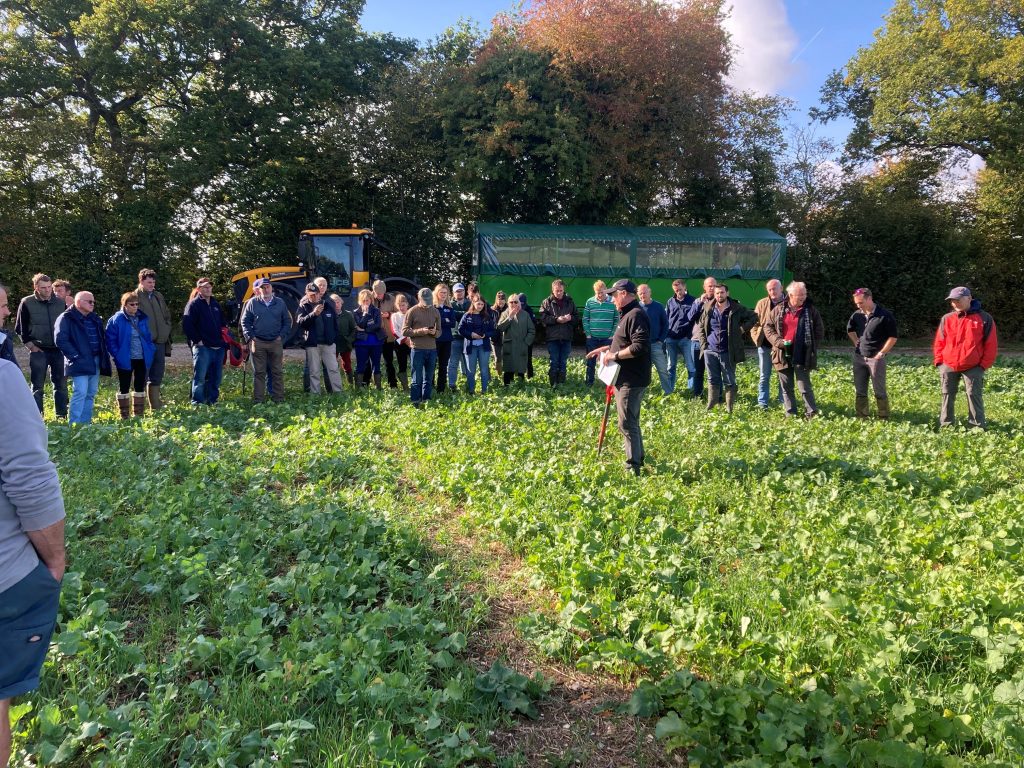
Sustainability in practice
Cover crops and no-till with the aim of reducing reliance on fertilisers and other chemicals
Cover crops have been used at Wheatsheaf Farming Company since 2010 and all spring crop ground has included a cover crop since 2015.
As part of the AHDB Strategic Cereal Farm East, I am working with South East Water, FWAG South East and Kings Crops to trial cover crops to reduce diffuse pollution. In the second year of trialling, comparisons are being made between:
- Cover crop mix 1 (Oats, clover, radish and vetch)
- Cover crop mix 2 (Buckwheat, radish, linseed and phacelia)
- Cover crop mix 3 (Oats and mustard)
These mixes have been selected based on their complementary growth traits (i.e. providing green surface cover), variation in root structure, and nutrient uptake capabilities.
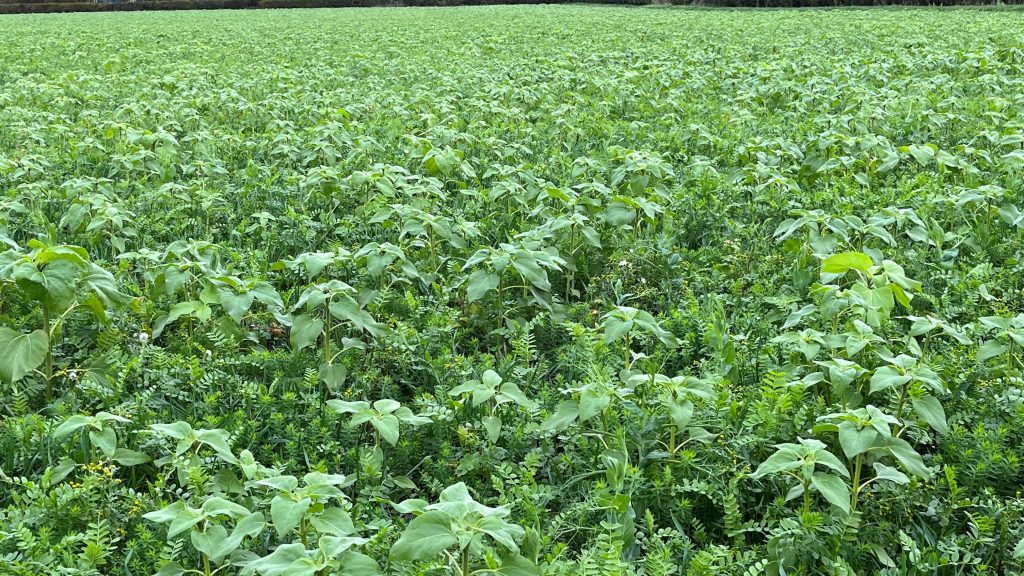
Aside from the Strategic Farm trial the two mixes used at Folly Farm are:
1. (Current) Phacelia, crimson clover, burseem clover, buckwheat, sunflowers, vetch and beans
2. (In the past) Radish, phacelia, sunflowers, mustard, turnip rape, lupins, vetch and gold-of-pleasure
The two rules for mixes are no brassicas and no cereals. No brassicas because they encourage slugs and OSR is grown on the farm. No cereals because I want to avoid the ‘green bridge’ effect.
Work at the Strategic Cereal Farm South | AHDB involves focussing on:
- The impacts of cover crop mixes; (i) oats, clover, radish and vetch, ii) buckwheat, radish, linseed and phacelia, and iii) oats and mustard, on soil health, water quality and following crops, using a whole host of assessments.
- Soil health at crop establishment (putting biological enhancements to the test in a regenerative system to see if early crop growth can be improved), and soil health under different cultivations; comparing conventionally managed fields against fields that have been no-till since 2015.
More details can be found on our AHDB project page.
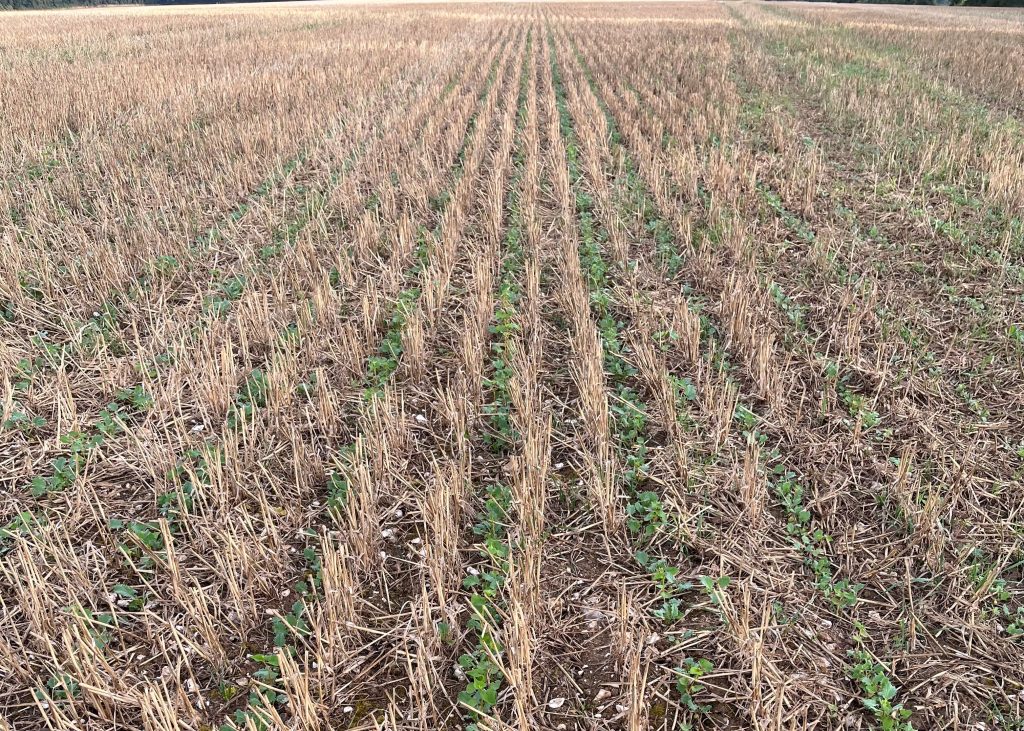
Challenges
When I first started experimenting with cover crops and no till, there was a lack of information relevant to the UK and the UK’s climate. This led to many speed-bumps due to my lack of understanding, there was also a lot of commercial pressure to stay ‘conventional.’ My advice is to go and talk to people who are doing these things – something you couldn’t do 10 – 15 years ago. People are now much more open about their success and failures. I believe that the supply chain needs to align with the regenerative approach, producing crop varieties that compliment a low input system. The recent Recommended Lists review at AHDB has seen peoples’ focus shifting from yield to pest/disease resistance ratings.
Motivations
I put my motivations down to having a thorough understanding of what these regenerative practices are trying to achieve and why soil health is so important. For me, the driving force behind it all, in the first instance, was to increase soil health, because with soil health comes crop resilience, and with crop resilience comes business resilience. Now my regenerative practices are looking more towards preserving the environment, boosting biodiversity to reduce reliance on chemicals.
I have gained my knowledge through my own experience but also from reading a lot of books by authors such as Gabe Brown, David Montgomery, Albert Howard, Edward Faulkner, Steve Groff, Kirsten Ohlsen, Nicole Masters and many more. Knowledge gained helps me get past the fact that I am not going to see a return on using cover crops and no-till on one crop in one year. I budgeted like that initially but quickly realised that cover crops need to be thought of as cost that will pay back overtime. The unanticipated level of savings on labour, fuel, depreciation, N and other inputs have also helped me to stay on the regenerative path.
Greatest achievements?
- To feel like true innovators of cover crops and the idea that soil health was an important part of crop production back in 2010.
- Successful pitch to become the AHDB Strategic Cereal Farm South in 2021 and looking beyond using cover crops and no-till.
- 2022 Sustainable Farming Award at the NAGA awards.
- I was asked to talk at NE Farming for Food and Nature conference about how I farm.
In September 2024, David received the Excellence in Practical Farming RASE award in recognition of his pioneering approach to improving soil health, which began with trialling cover cropping in 2010 (an award sponsored by Trinity AgTech).
Nutrient density
I have an interest in the nutrient content of grain and the unknowns surrounding it. I believe there is growing evidence that the way crops are grown has a direct effect on the nutrient density of the crop produced and the food it makes and that there is a positive effect on the nutritional value of a crop from growing it in a regenerative system. If you grow a crop of milling wheat, the miller is going to look at the protein and the Hagberg falling number, but there could be more metrics/nutrients worthy of examining. It’s starting to come to light in America and other countries that maybe there is more metrics to judge grain by… Potentially undiscovered things like this on both the crop production and nutrition side of things are what really enthuse me and gives me the motivation to continue on the regenerative farming path.
Looking to the future, I would like to:
- Reduce inputs further, especially N, by understanding more about how nature works. I think there’s a trait within farmers to fix problems and it’s a great trait but sometimes it involves interfering with nature where maybe we could let it resolve the problem itself. Instead of reaching for a can, maybe we can work alongside nature to boost biodiversity around the farm and create a balance in the living element of soil that is beneficial to growing crops (fungi dominant).
- Produce crops with less inputs and seeing how the commercial side catches up – hopefully creating varieties that combine a better rooting and disease profile that will compliment this approach to farming.
- Learn more about nutrient density. We are working with the AHDB as a Strategic Cereal Farm to try and put some science behind this. I want to learn more about which nutrients are important.
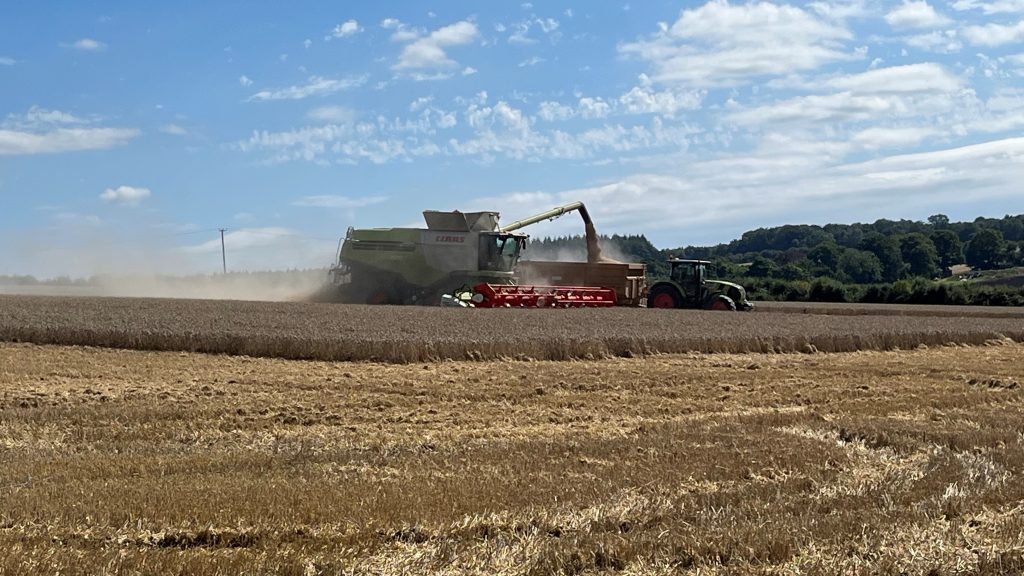
Farmer tips
- Read books around the subjects to get an understanding and hopefully build a passion for what you are doing.
- Be inquisitive, question the conventional.
- Try things and try again.
- Never underestimate the local community in which you live and work. Encourage them to visit and understand how you are producing their food.
- Ultimately, be proud of what you do and share it.
This profile has been created in collaboration with AHDB. With many thanks to Matthew Brearley and David Miller.
All images courtesy of David Miller. All Rights Reserved


